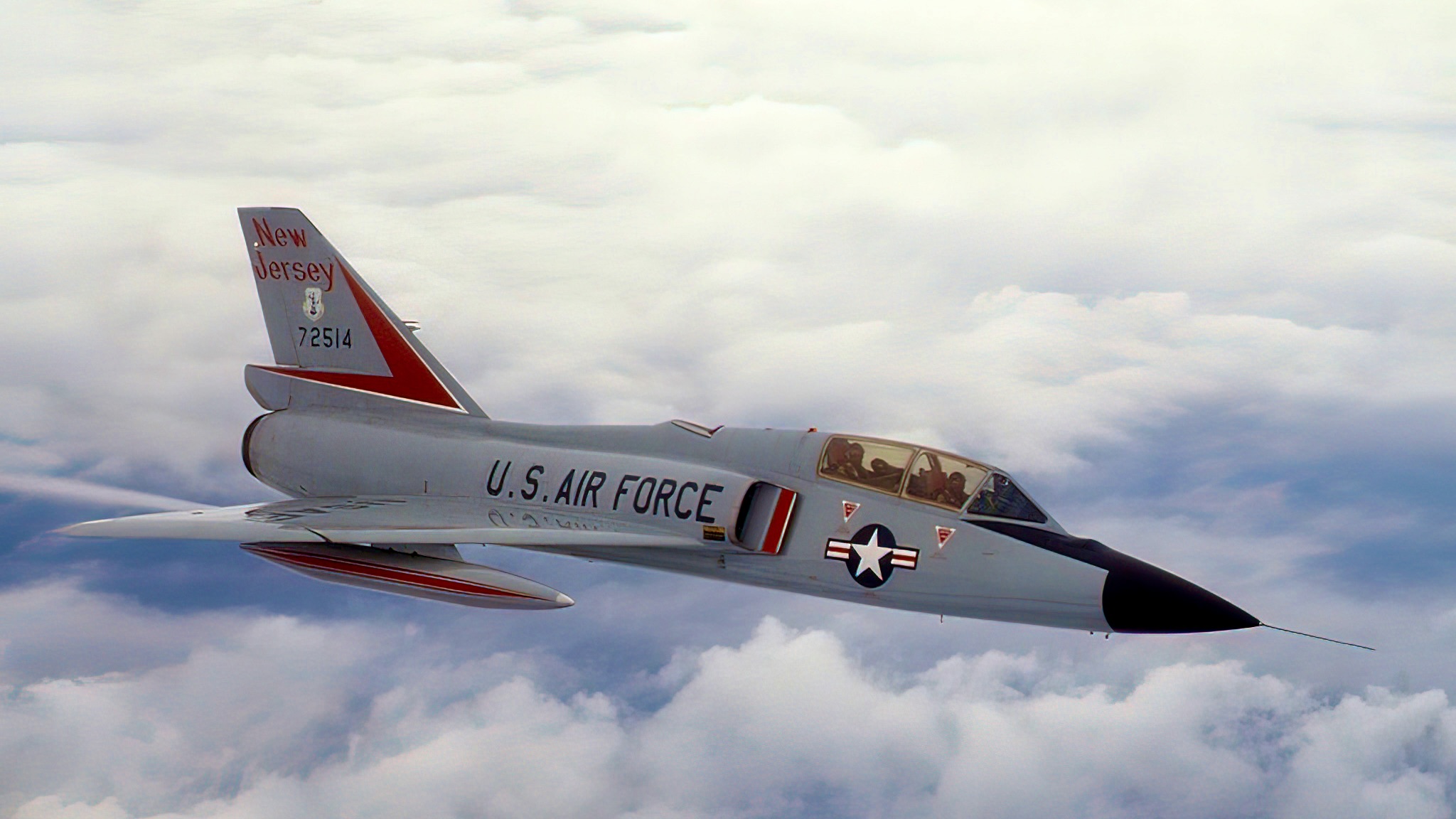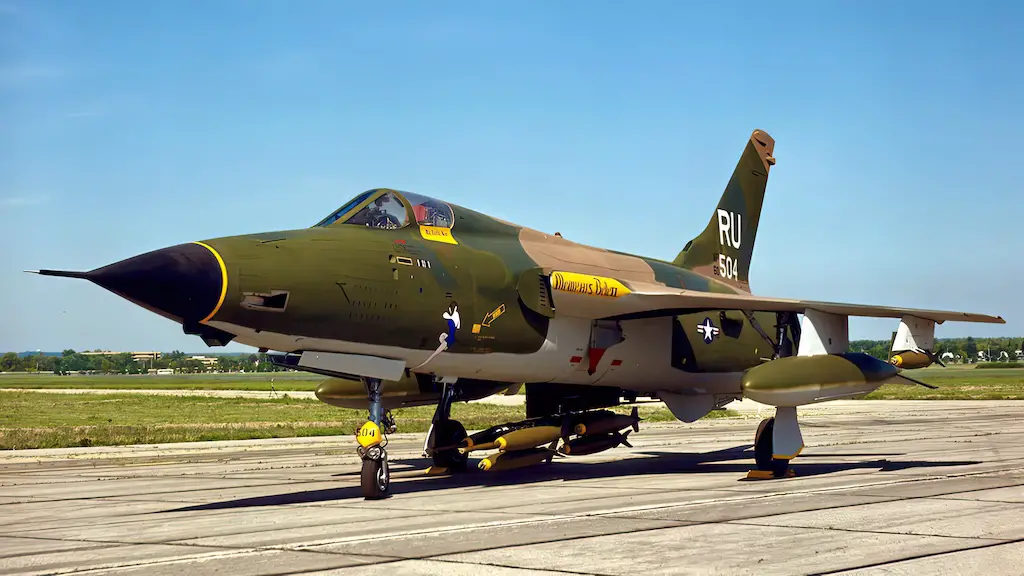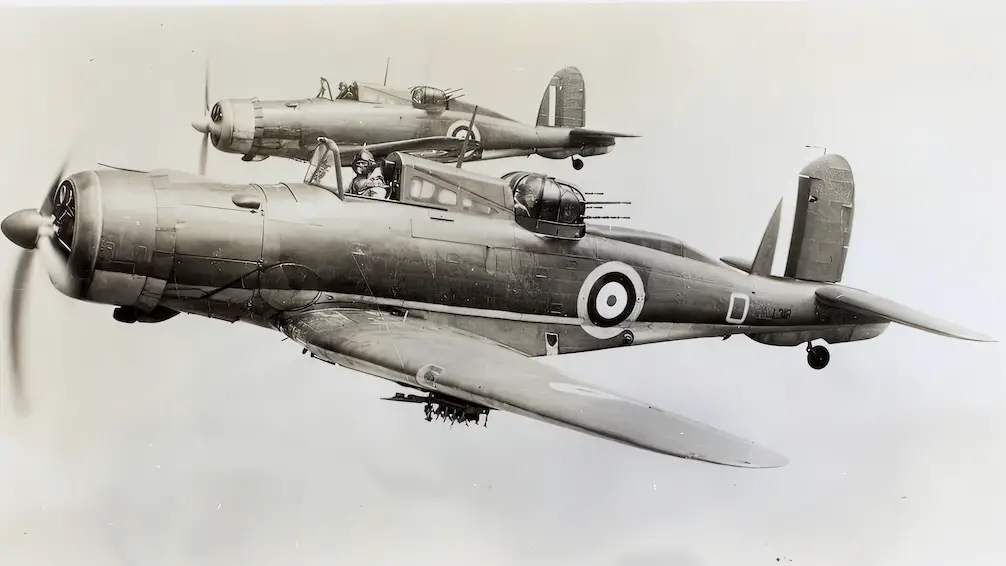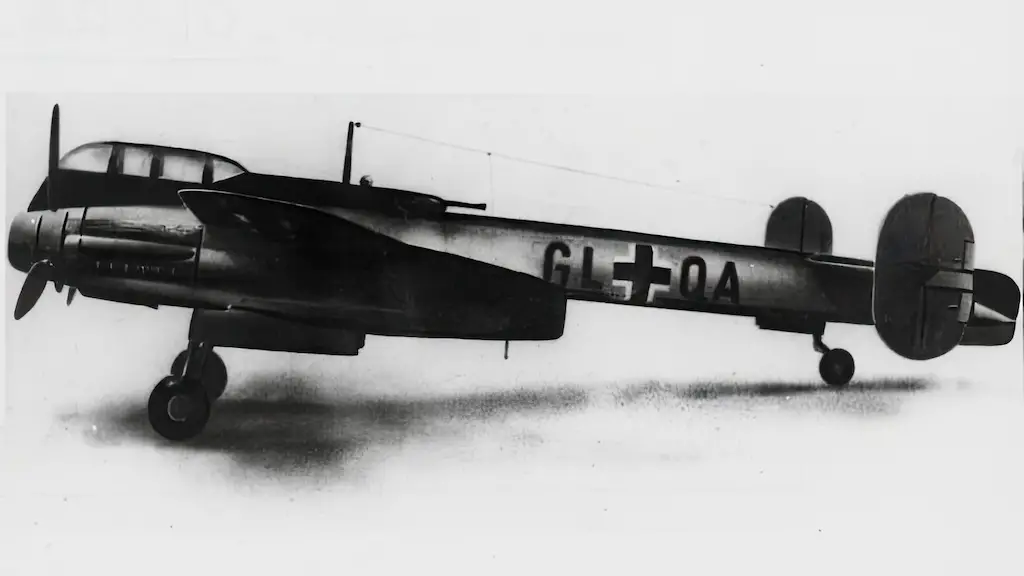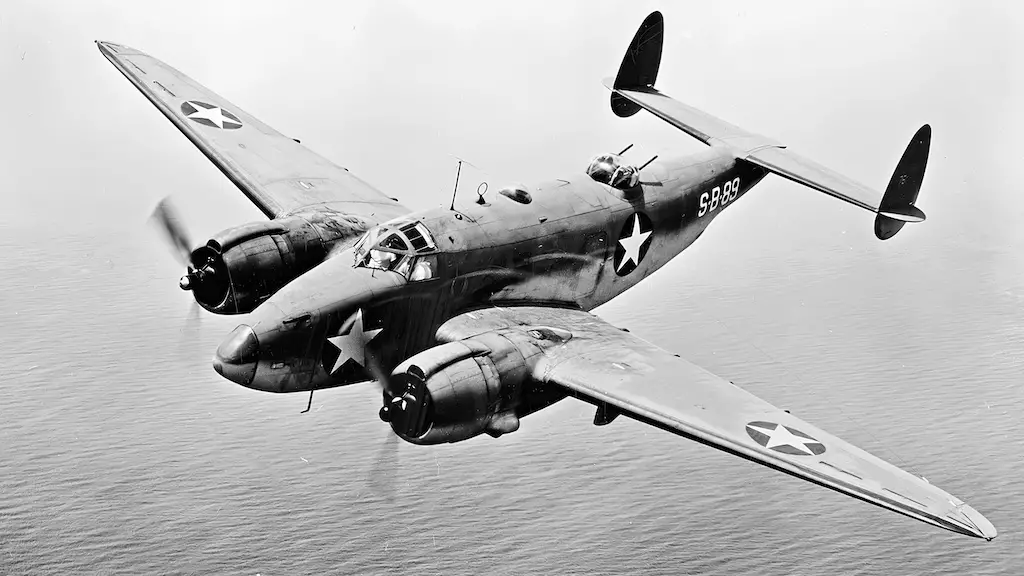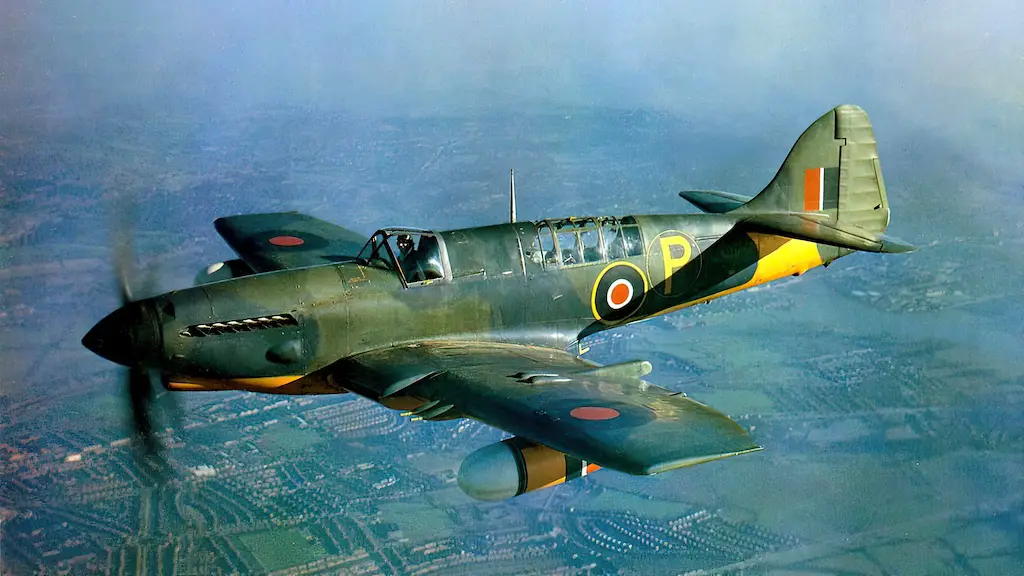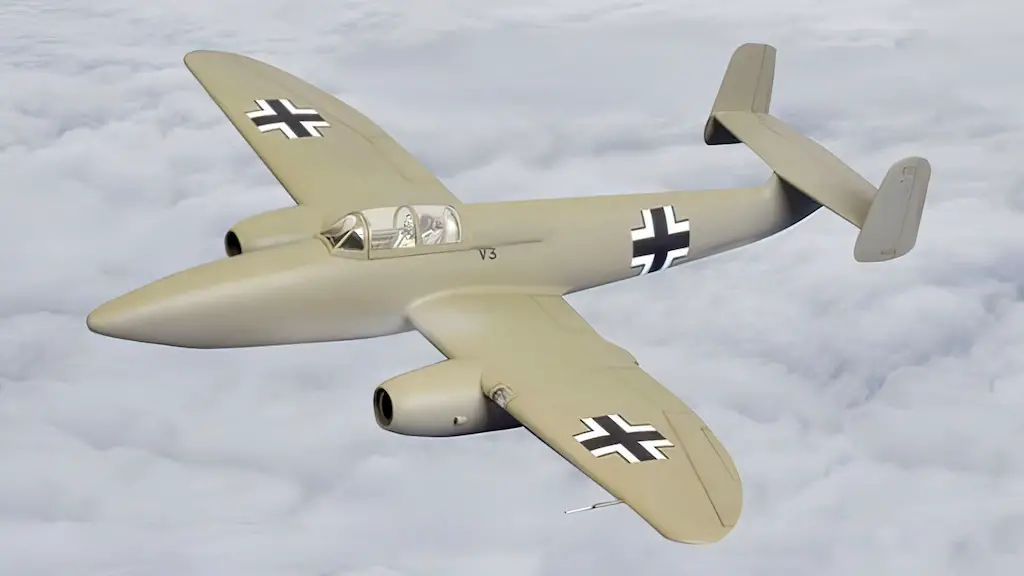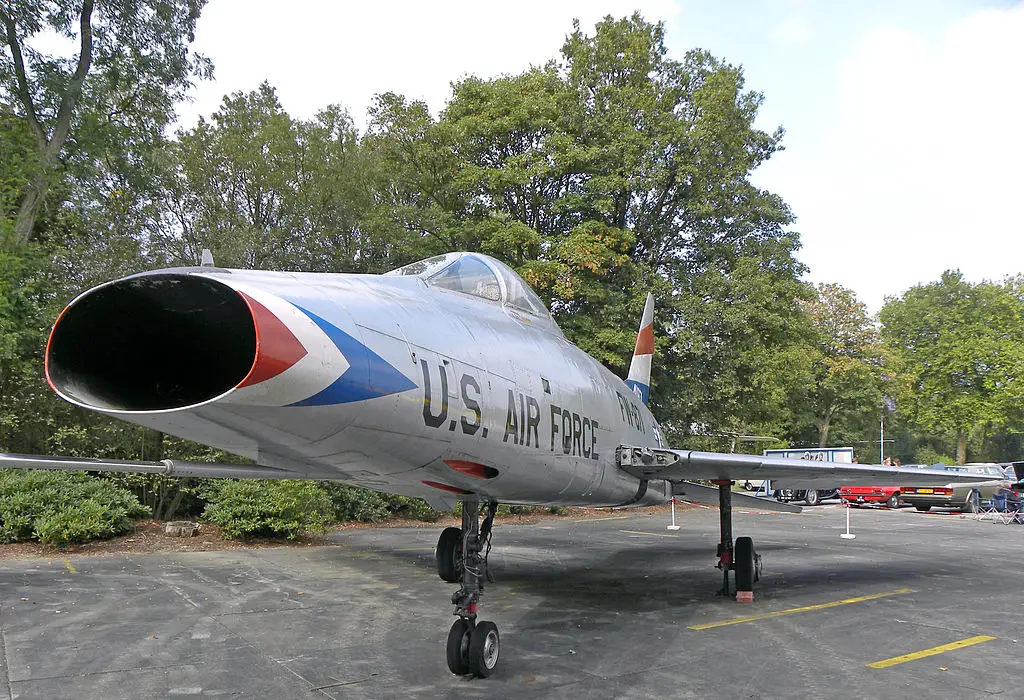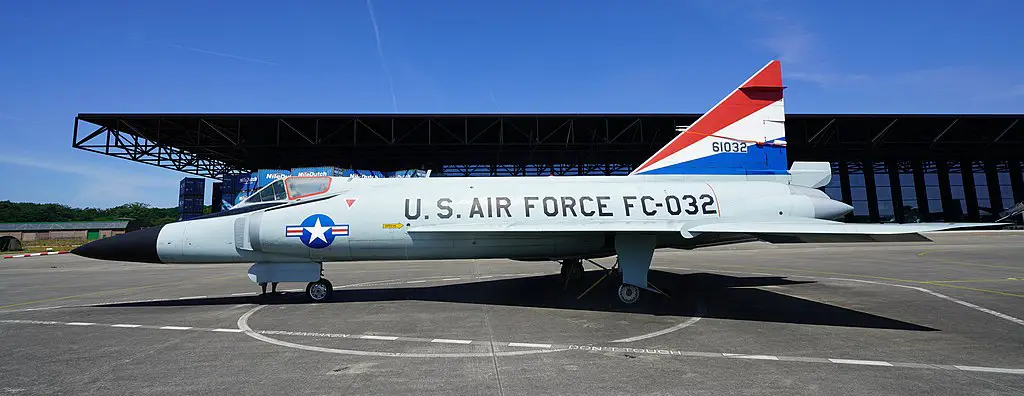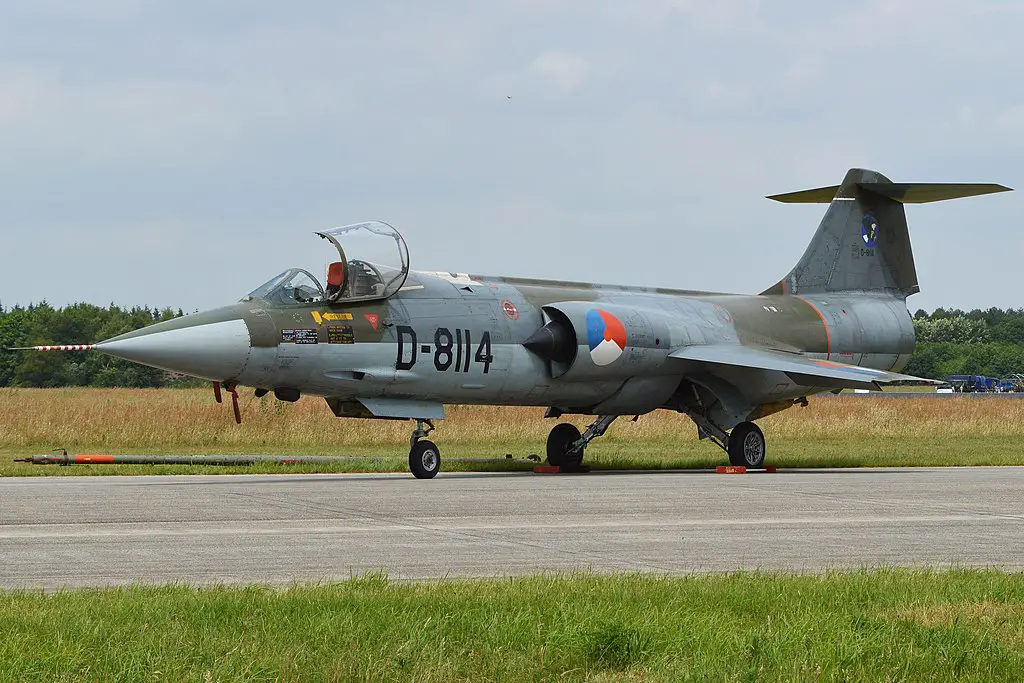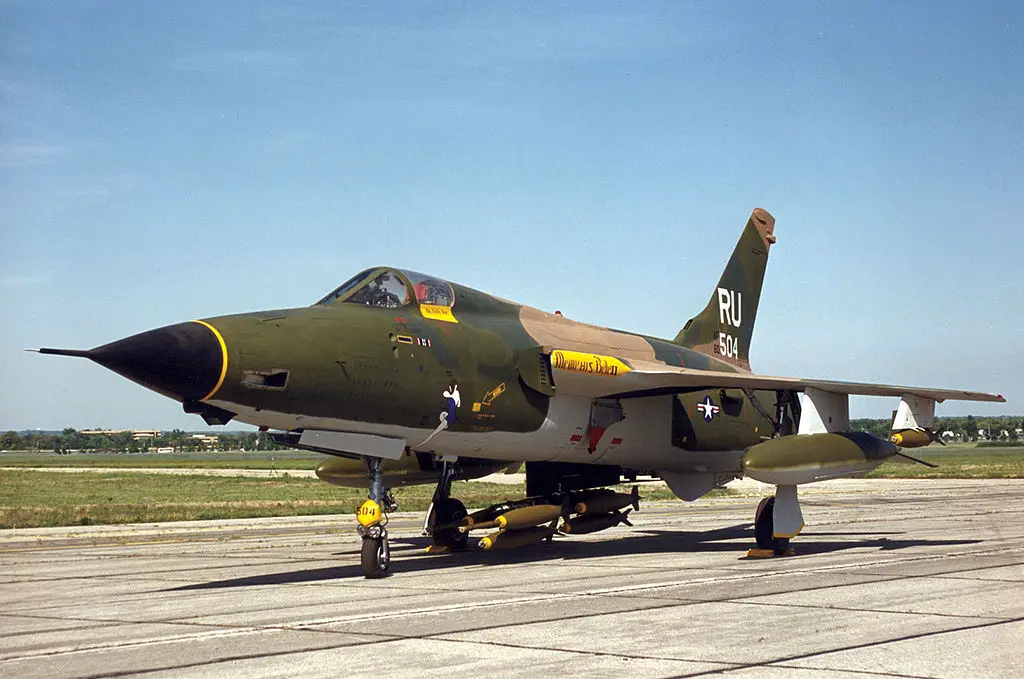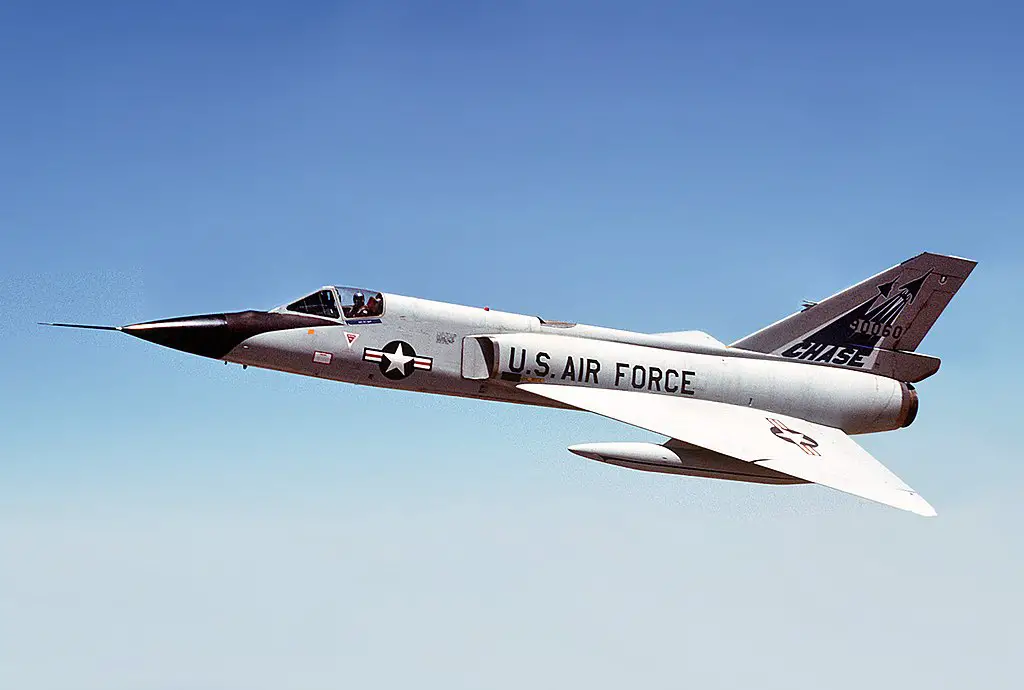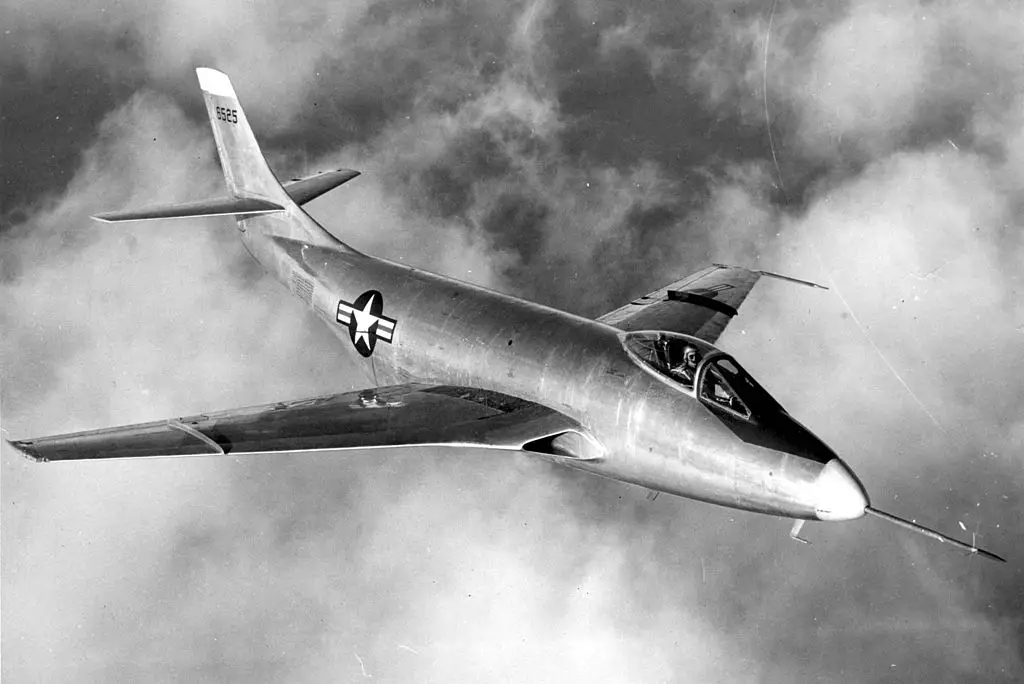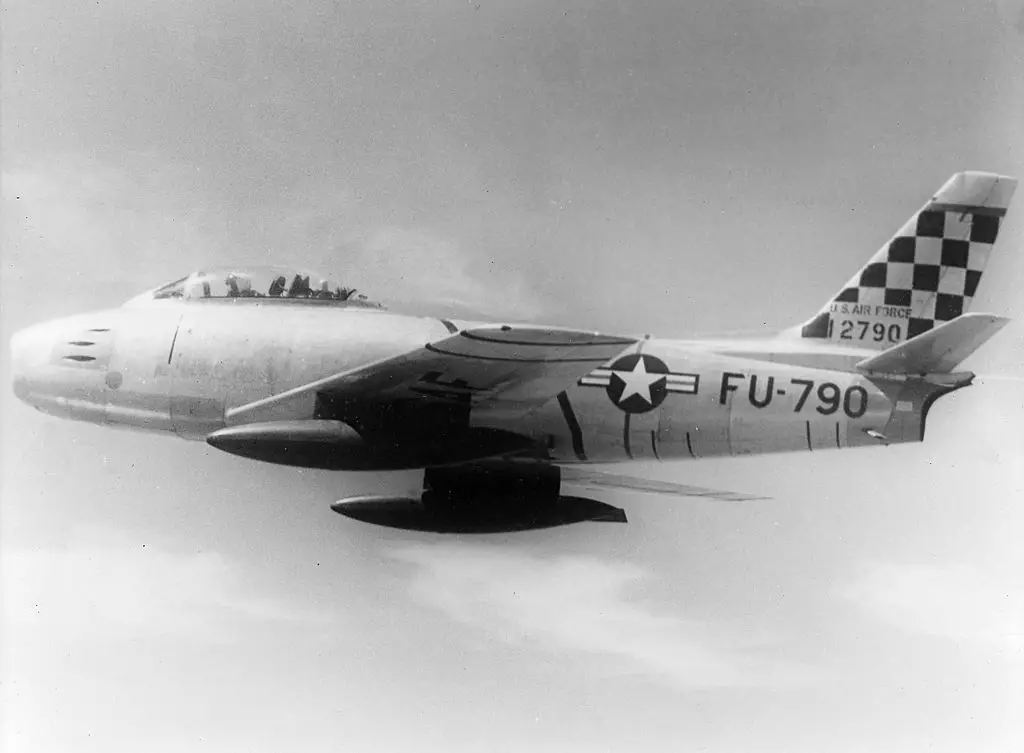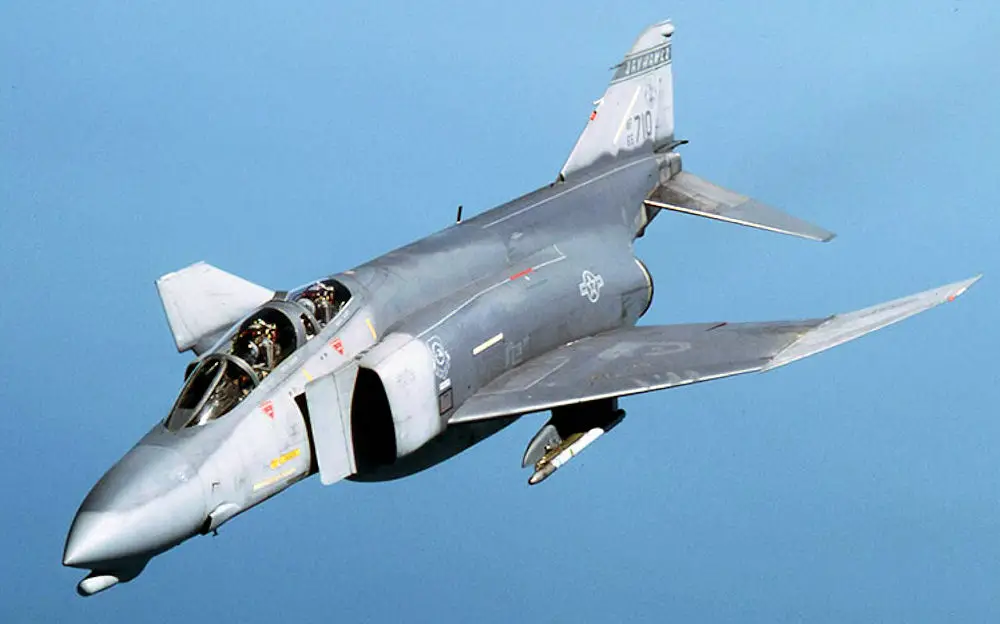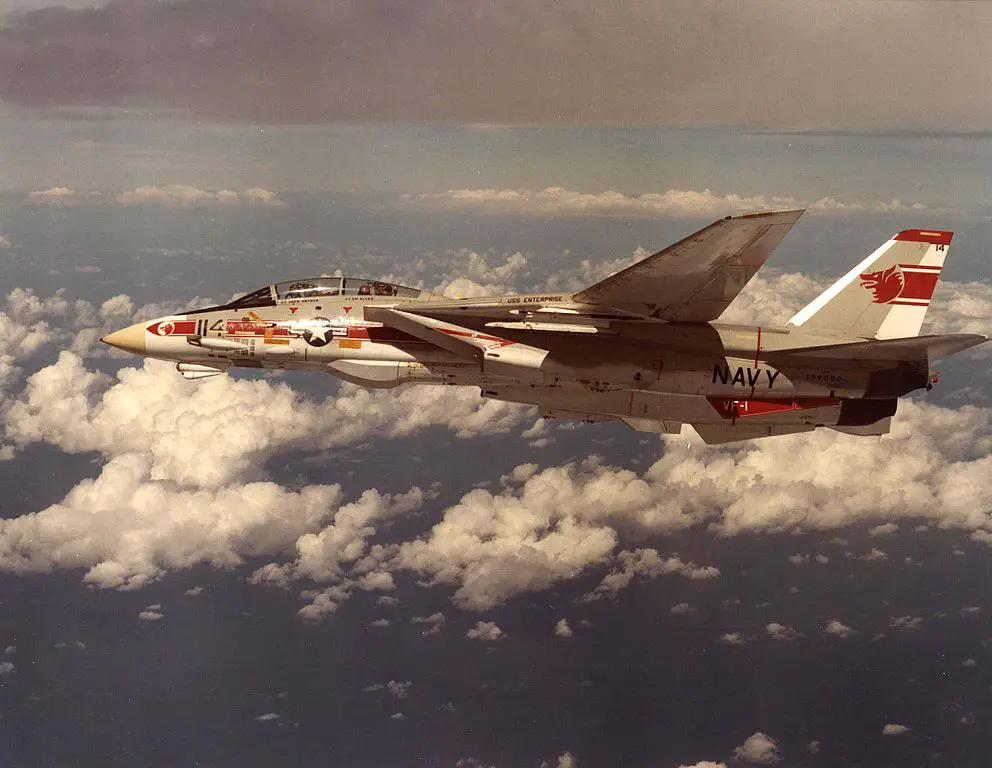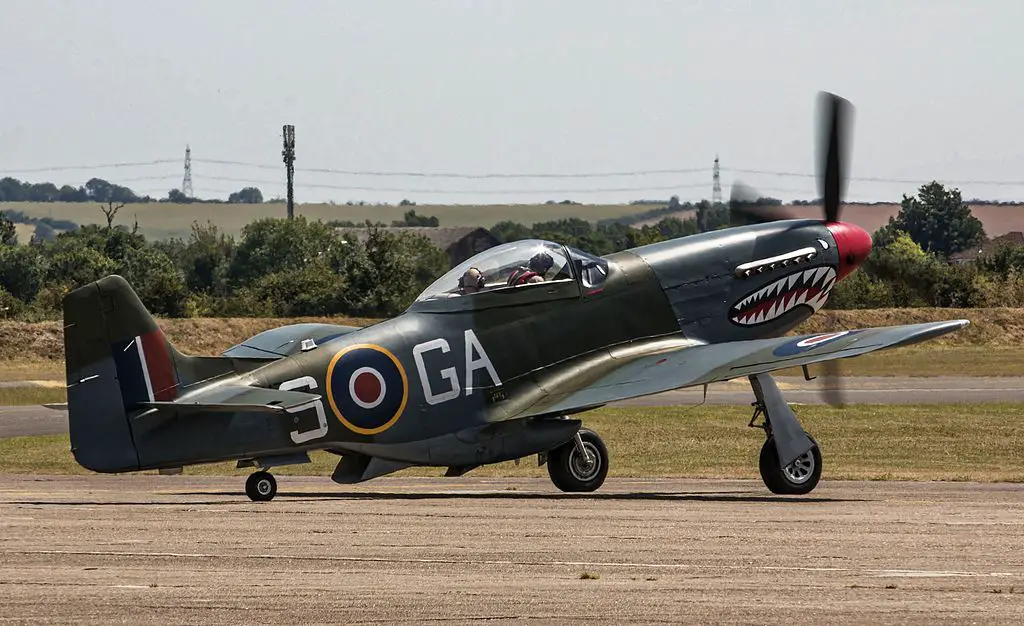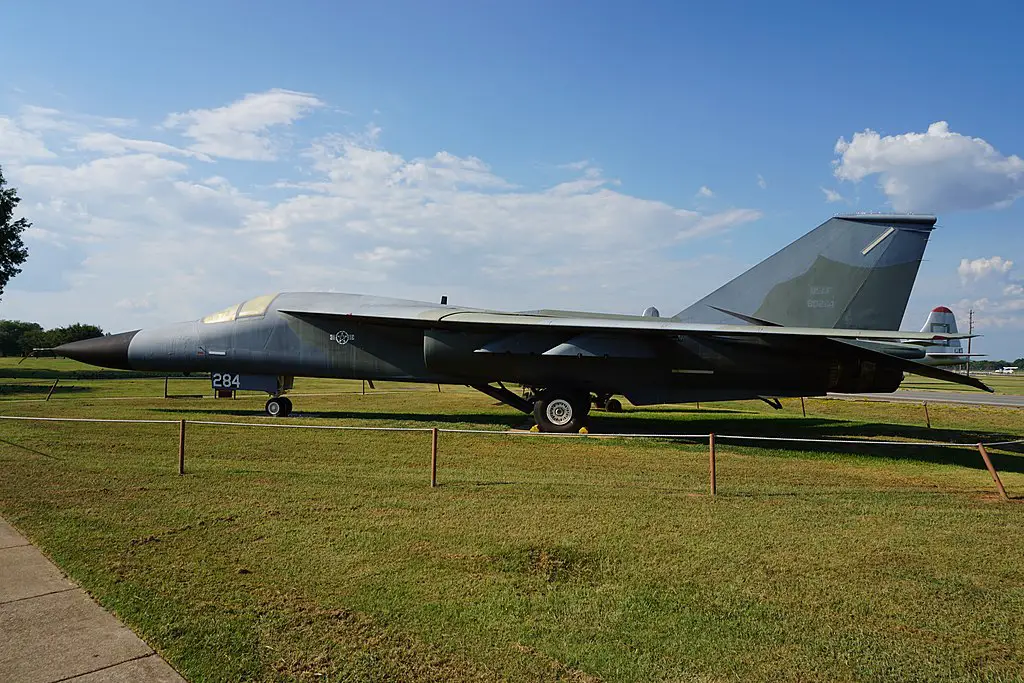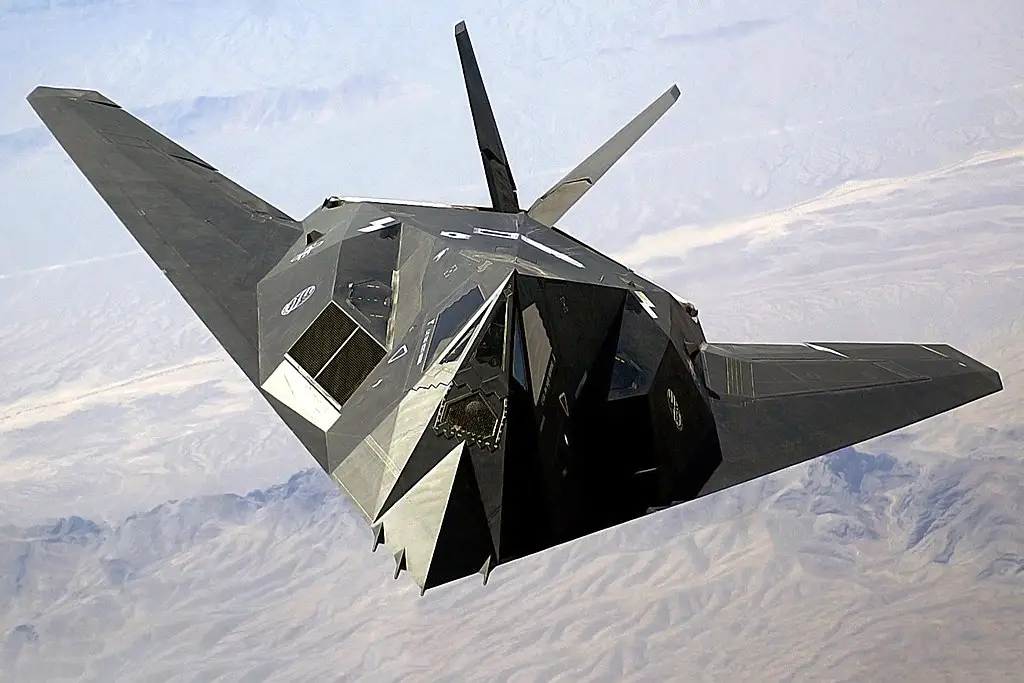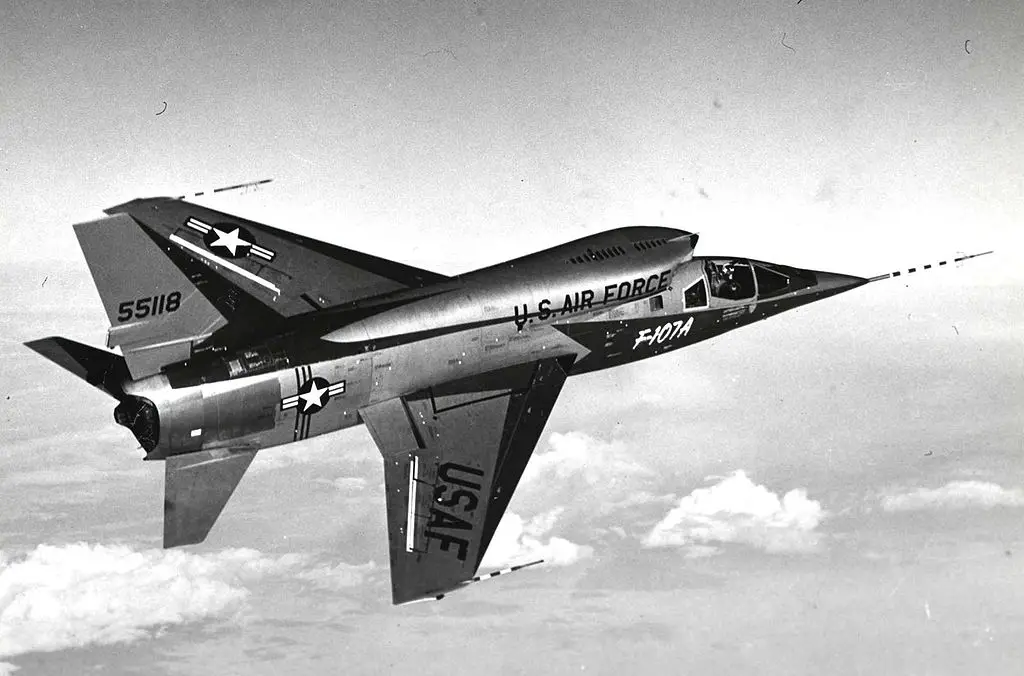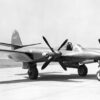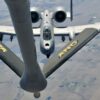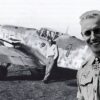The Century Series is an array of US Air Force interceptors and fighter-bombers originating in 1950s and sharing the F-1** pattern of designation: F-100 Super Sabre, F-101 Voodoo, F-102 Delta Dagger, F-104 Starfighter, F-105 Thunderchief, and F-106 Delta Dart. Belonging to the second generation of fighter jets, they shared similar performance characteristics and design solutions, pioneering many innovations of that era.
All of these warplanes were mass produced and most of them actively participated in contemporary USAF combat operations. Some had a relatively short career, others remained in service for decades. But all of them have become iconic aircraft of mid-20th century.
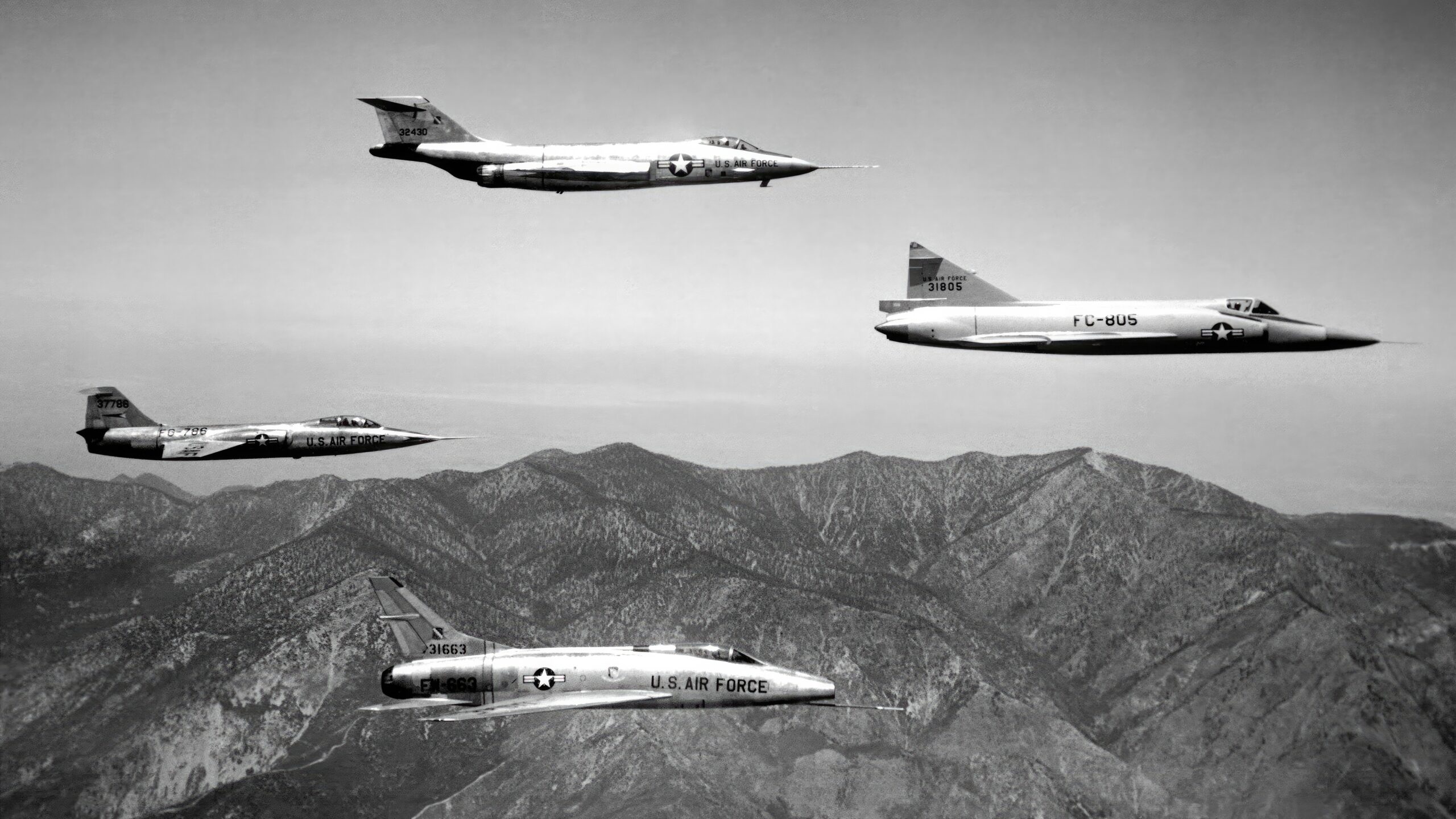
Before resetting the counter
When the USAF, founded in 1947 as an independent service, adopted the F- designations for fighters, it simply continued the count established earlier for the P- designations (for “pursuit plane”). That is, F-86 Sabre was in the same sequence of numerical designations as the P-51 Mustang. In the early 1960s the counter was reset to zero, with aircraft like F-4 Phantom II, F-14 Tomcat, and F-35 Lightning II forming a new line of names.
There were some exceptions, too. Aircraft that appeared after the counter was reset but still retained the old designation model for some reason. Such as F-111 Aardvark or F-117 Nighthawk. Those are not a part of the Century Series—if for no other reason than that they wouldn’t really fit in that company. The Century Series is also restricted to mass-produced aircraft, excluding prototypes that had F-1** designation, like North American F-107.
F-100 Super Sabre, the supersonic “Hun”
The North American F-100 Super Sabre entered the USAF service first among all the Century Series fighters and was nicknamed “Hun” (for “hundred”) by its pilots. It was the first USAF aircraft capable of reaching supersonic speeds in a level flight. Despite a relatively high accident rate, the Super Sabre, especially its latest variants, proved to be a good and capable machine. Introduced with the USAF in 1954, it was still in service, when the Vietnam War broke out.
Although it quickly gave way to the F-4 Phantom II as an escort fighter, the Super Sabre went on flying close air support, reconnaissance and search-and-rescue missions in Vietnam until 1971. Super Sabres also saw combat during their service in French and Turkish armed forces.
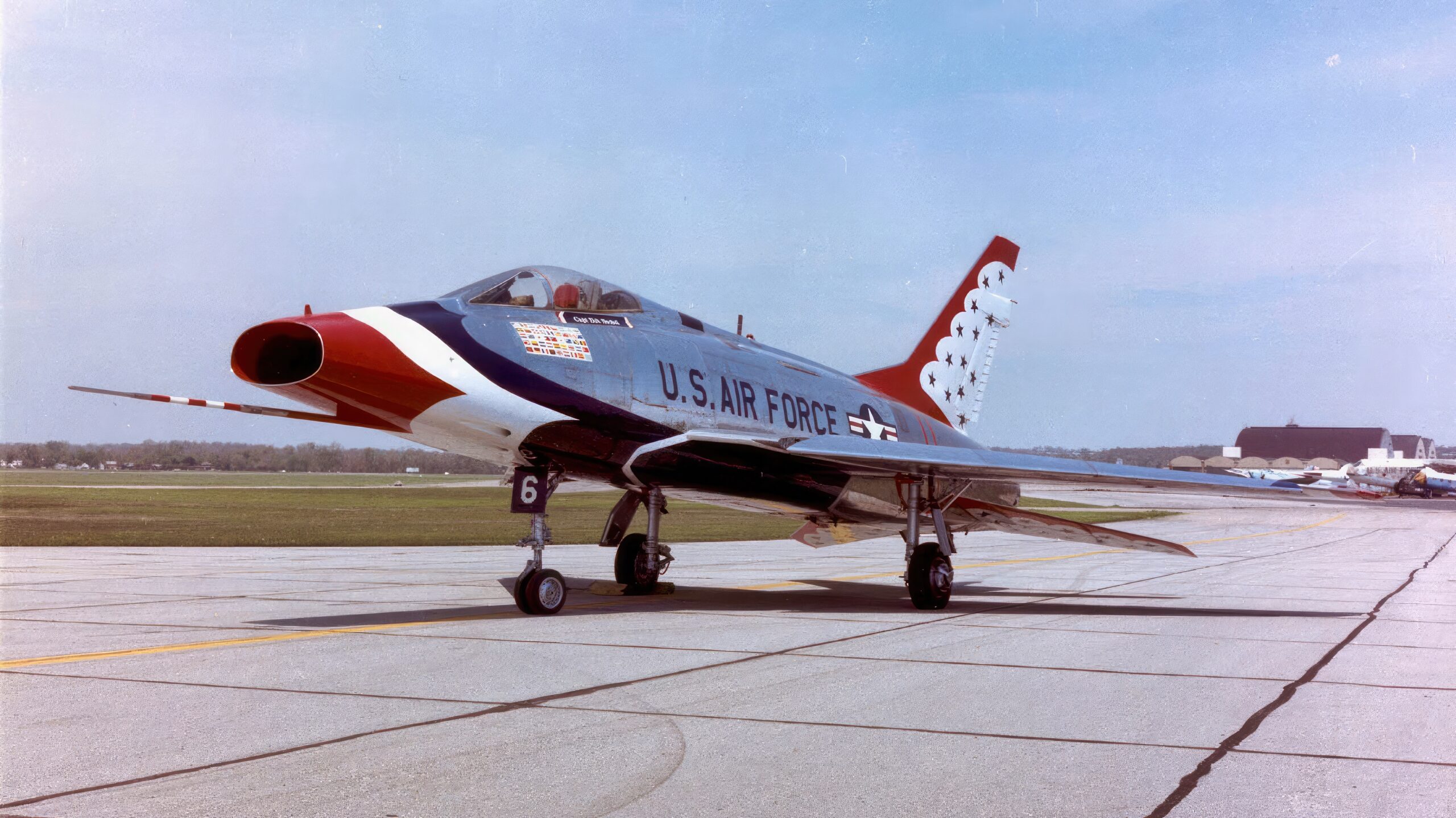
F-102 Delta Dagger, the wasp-waisted “Deuce”
The Convair F-102 Delta Dagger was the first supersonic combat aircraft featuring a delta-shaped wing and a “wasp waist” fuselage designed in accordance with the area rule concept. Pilots called the F-102 “Deuce.” It was a very fast and powerful interceptor. Among the F-102’s weapons was the AIM-26 Falcon, the only guided air-to-air missile with a nuclear warhead ever produced in the US. It was supposed to break up formations of enemy bombers heading towards the US mainland. Dedicated to this strategic role, the “Deuce” did not even have a gun and saw only limited combat use in Vietnam.
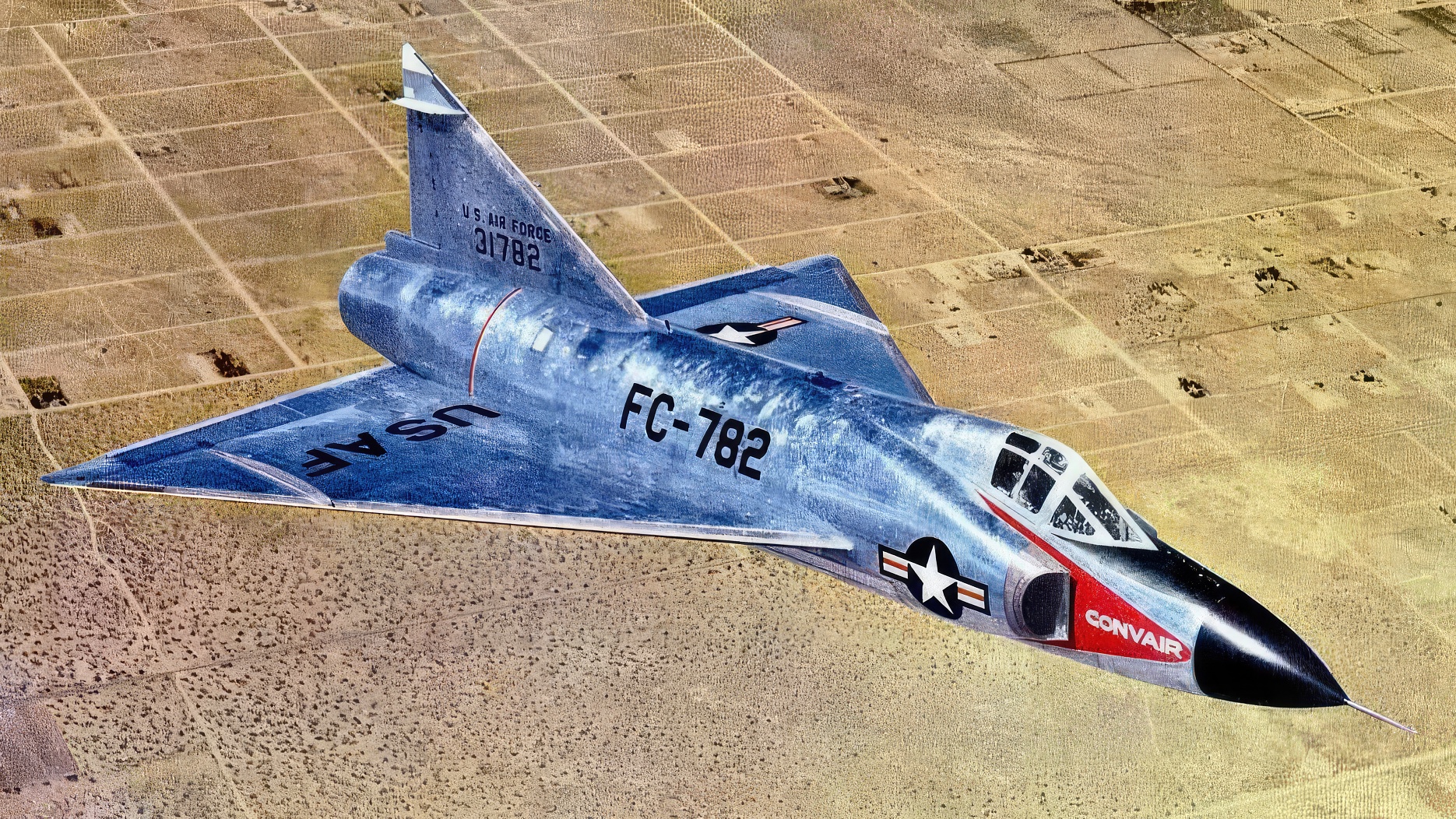
F-101 Voodoo, the nuke-tossing “One-Oh-Wonder”
The McDonnell F-101 Voodoo was designed as an escort fighter for long-range bombers. But it was also a fighter-bomber capable of delivering tactical nuclear weapons, including by using the crazy “over the shoulder” technique. The F-101 went supersonic during its very first flight and soon became the first operational American aircraft to exceed the speed of 1,000 mph.
However, Voodoo was never easy to fly and had a reputation of an unforgiving aircraft. Still, those who mastered it, got to enjoy its superb capabilities and called it “One-Oh-Wonder.” The F-101 was especially famed for daylight reconnaissance missions over Vietnam, which it routinely flew at speeds of over Mach 1.8.
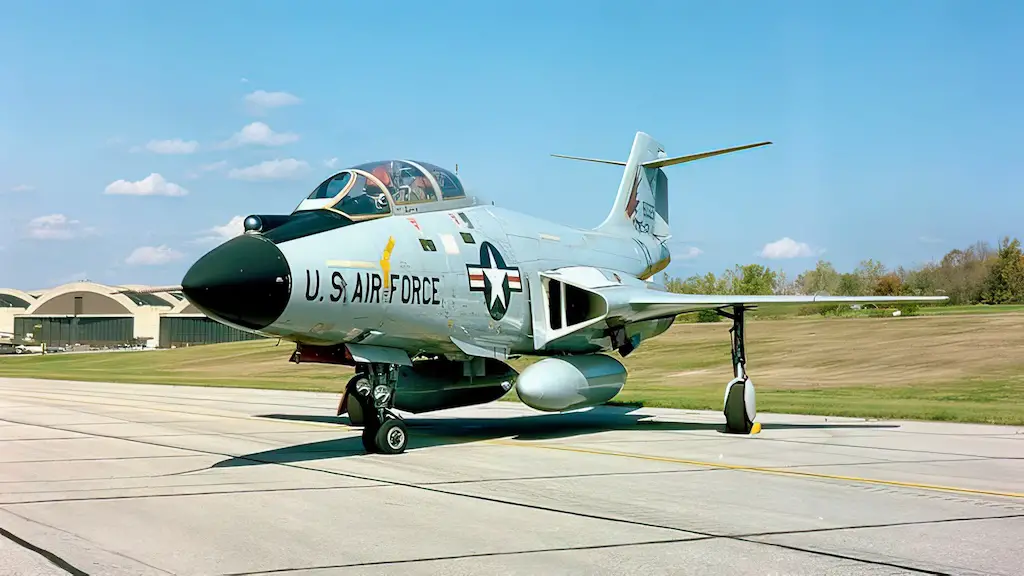
F-104 Starfighter, the double-sonic “Zipper”
The Lockheed F-104 Starfighter, introduced with the USAF service in 1958, boasted extreme performance capabilities for its time. Capable of flying at Mach 2, it got a moniker “Zipper.” But the F-104 could fly not just very fast, but also very high. In May 1958, it rose to 91,243 ft, breaking the world altitude record.
Less than ten days later, another pilot flying an F-104 set a world speed record of 1,404.19 mph, making the aircraft a unique simultaneous holder of world speed and altitude records. While the USAF phased out the Starfighter by the end of 1960s following rather limited combat use in Vietnam, it went on to serve in other nations’ air forces for many decades more. Italy retired its last F-104s as late as 2004.
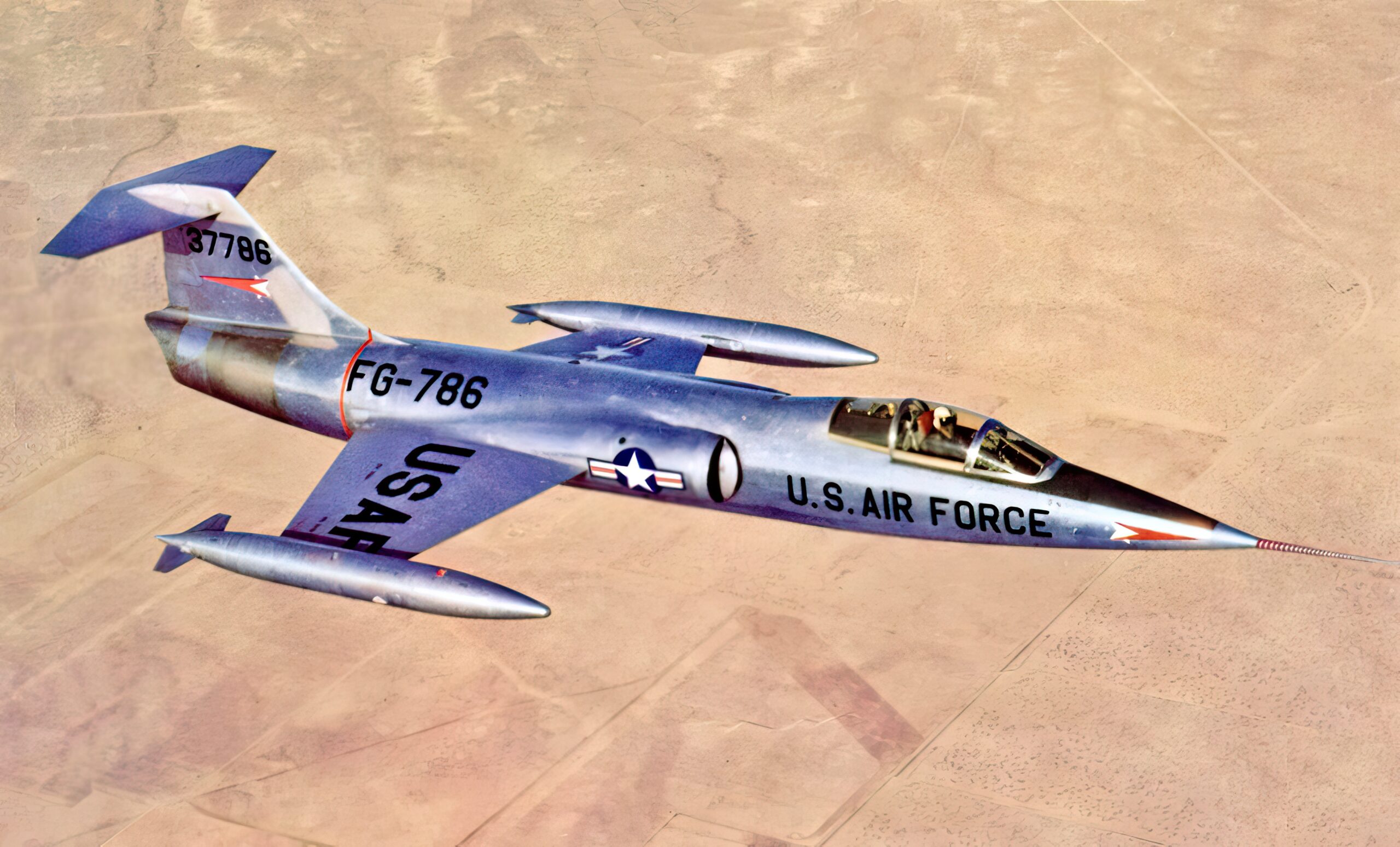
F-105 Thunderchief, the battle-scarred “Thud”
The Republic F-105 Thunderchief was a powerful fighter-bomber, capable of delivering up to 14,000 lb of bombload. Similarly to some of its fellow Century Series fighters, and in line with the war doctrine of the time, Thunderchiefs intended role was delivering nukes as part of low altitude penetration missions.
However, its real fate was different. The F-105 had a very hard frontline career in the early years of the Vietnam War, flying over 20,000 sorties there. Around 300 “Thuds” were lost in combat over Vietnam, bearing the brunt of ground attack missions amid Viet Cong’s ever more active air defenses. That was a role for which the F-105 was not ideally suited.
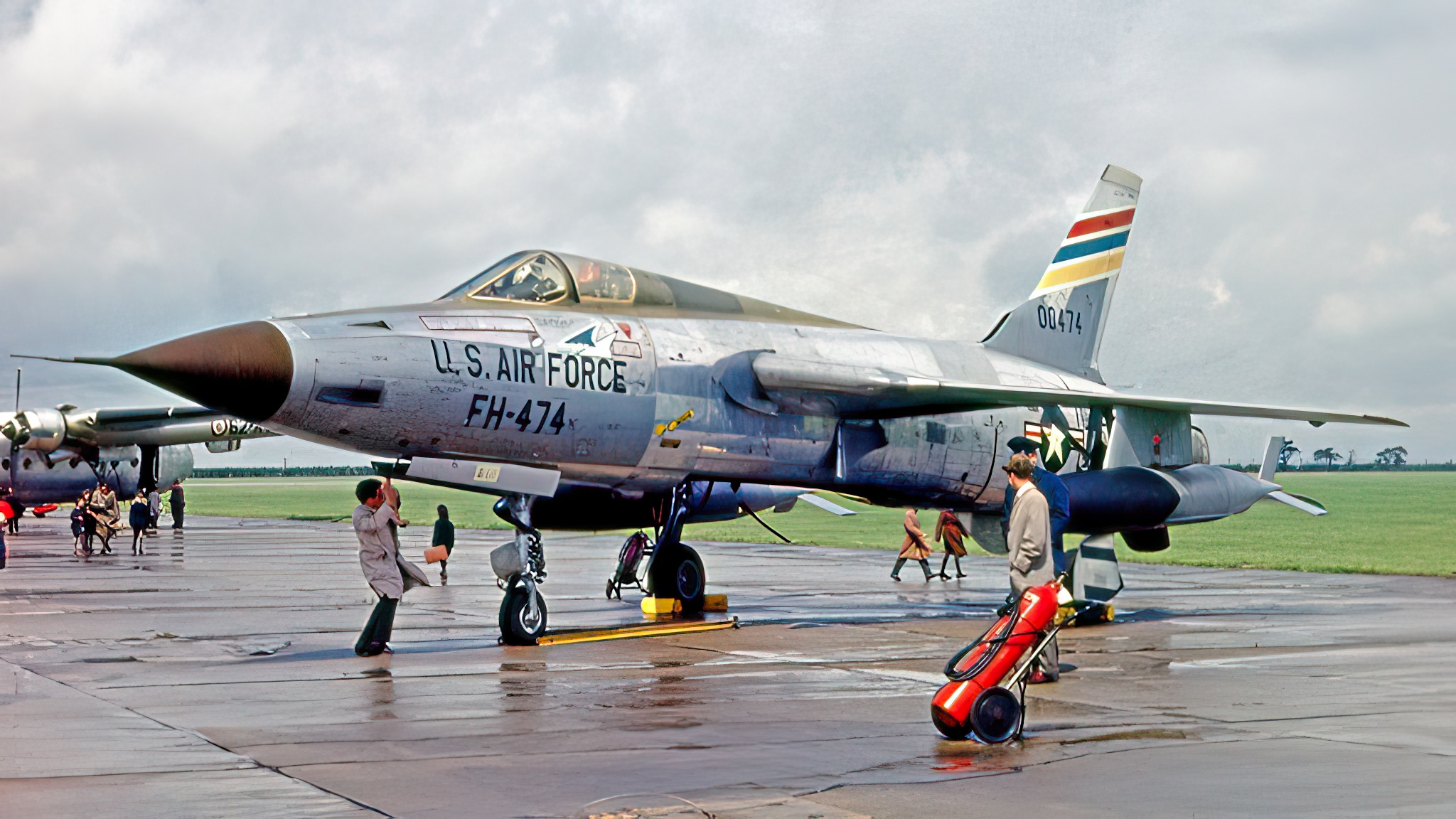
F-106 Delta Dart, the vigilant “Six”
Conceived as an improved version of the F-102, the Convair F-106 Delta Dart became a notable aircraft in its own right. Pilots and ground crews called it simply “the Six.” With the heat of nuclear arms race shifting into the sphere of ICBMs and nuclear submarines, the F-106 was the last purpose-built US interceptor. And an excellent one, a pro in hunting down strategic bombers, such as Soviet Tu-95 Bear, which it often shadowed in the skies. Delta Dart guarded America’s airspace as part of US Air Force and Air National Guard almost until the end of the Cold War. And it was the only Century Series fighter never to take part in a hot one.
